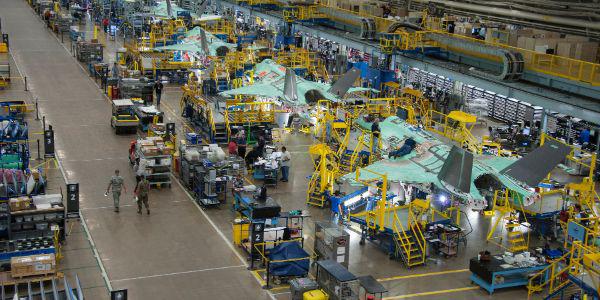The Misplaced Fear of a Military Technology Gap
The National Security Commission on Artificial Intelligence published its final report this spring, grimly declaring that “America is not prepared to defend or compete in the AI [artificial intelligence] era,” and warning that “within the next decade, China could surpass the United States as the world’s AI superpower.”
The commission’s report stands in a storied tradition of well-researched and well-received reports from Washington wonks darkly predicting the end of the U.S. technology advantage—recently, for instance, in quantum computing. It’s a tradition that stretches back to the famous—and famously wrong—predictions of a “missile gap” with the Soviet Union by the Gaither Committee in 1957.
But when it comes to military competition, concern about being “overtaken” or “falling behind” in technological research is misplaced, experts tell SIGNAL Magazine.
The truth is, in military conflict, the advantage doesn’t accrue to the player that’s notionally “ahead” in one particular technology or another. Rather, the advantage goes to the player most able to integrate and deploy whatever new technologies they already have onto the battlefield.
“Maintaining our technological edge is not just about having the best research, though obviously, we want great research. It is about getting technology into the hands of the warfighter more quickly,” says Eliahu Niewood, vice president of intelligence and cross-cutting capabilities at The MITRE Corporation. “If we can’t do that, we’re not going to win.”
But maintaining that edge by swiftly integrating technologies also means adopting a new approach, one that considers new capabilities in the context of the entire mission, the end-to-end kill chain.
“This systems engineering thinking looks at the whole process end-to-end … [it] starts by asking where are the gaps in that kill chain? What is broken?” Neiwood explains. Every link has to work. “If something’s broken, you can’t fix that by making some other part of the process faster,” he adds.
This new systems approach means you shouldn’t start with a plan for deploying a novel capability as fast as possible. Rather, you should begin with a list of the blockages, gaps and bottlenecks in military mission chains and work out how to fix them.
“It’s not about getting a cool piece of technology into a warfighter’s hands,” says Niewood. “It’s about how you solve end-to-end mission problems. The right technology for doing that may not be the most exciting technology or the one that’s on the front page of the news. ... That doesn’t matter.”
So what changes need to be made in U.S. Defense Department structures to promote rapid integration? Niewood says what’s “critical … is the ability to prototype and experiment,” pointing out that most large Defense Department programs are very linearly structured. “Here’s a deadline. Here’s your requirements. Here’s deliverables against those requirements. ... Somehow we need to build into that system the flexibility to experiment and prototype and to adapt.” Niewood says Defense Department leaders need to find ways to write requirements focused on solving the overarching problem rather than just getting the deliverables out. “And we don’t have those structures today in the way I think we need,” he concludes.
But experimenting alone is not enough, points out Frank Konieczny, who retired earlier this year as chief technology officer of the U.S. Air Force, because all too often, experimental advances get stuck when the time comes to transition them to Defense Department programs of record. There are several common barriers to the successful integration of new capabilities, he says. “The number one standard reason is that everybody believes if it’s not invented here, it can’t be any good. That [attitude] has to go away.”
On the other hand, Konieczny explains, every Defense Department component has a different mission set. “What applies over here, it may not apply to another component the same way. … You can’t ram things down people’s throats because it may hurt their mission. You have to understand that you may have to tailor things for a particular mission set.”
Another difficulty with experiments, Konieczny notes, is the different attitude toward failure in the military vis-a-vis the private sector. “Failing fast” is a Silicon Valley mantra, invoking the virtues of an ecosystem where success means scaling dramatically and failure means the chance to try something different next time. Economists and others have pointed to this “recycling” of personnel and ideas as a key ingredient in the success of innovation in Silicon Valley.
But in the huge bureaucracy of the Defense Department, failure tends to be treated differently, Konieczny says, because senior officers in a post may only be there for a year or two. “People don’t like to admit failure,” he observes. “In the private sector, it is almost expected that you’re going to fail. But if you’re only there for a year or two, suddenly failing looks different. … The military can get very paranoid … if things aren’t working right.”
Worse, even when people are prepared to admit failure, the exigencies of the bureaucratic context sometimes mean it cannot play out fast. “I’ve seen projects that are failing, but just the politics of trying to shut them down—it can take a year or more,” Konieczny says.
“You have to experiment ... you want to do cutting-edge research. … The trick is figuring out how to move that into real-life progress, how to transition that to a mission-level production capability,” he concludes.
To help with that kind of transitioning for the key technologies it develops, the Air Force Research Laboratory last year adopted a new process it calls War Tech.
“To ensure transition, you have to get stakeholder buy-in early,” explains Christopher Ristich, the lab’s director of strategic development, planning and experimentation. “We bring in acquisition experts, logistics and sustainment experts, operators. … You have to bring in the stakeholders that are ultimately going to use or sustain the systems or purchase the systems. And they have to be able to bring in their expertise, their lessons learned, and they have to buy in that it’s a viable concept—that it has military utility.”
War Tech also starts by looking at gaps in the end-to-end mission kill chain. “We start with the National Defense Strategy,” Ristich explains, “then we begin breaking that down … to take the challenges, the operational challenges, for the future force. And then together as a multidisciplinary team, we explore how technology and CONOPS and tactics could be used to address those operational challenges. And out of that ideation process, we generate concepts for new S&T programs.”
That kind of collaborative, multidisciplinary approach is vital, according to Vince Vlasho, Accenture Federal Services senior managing director for the U.S. Defense and Intelligence Portfolio.
But it needs to scale way beyond service-level organizations such as the Air Force Research Laboratory, in part because in future peer conflicts, the U.S. likely will be fighting alongside regional allies. To maximize the warfighting value of integrating new technological capabilities, they must be shareable with those allies.
“DoD needs to create an organization that is really hyper-focused on collaboration,” Vlasho says. “Within each service, the collaboration is more fluid than it is across the services, which in turn is more developed than when you start talking about collaboration with regional allies.”
To wage this kind of new technological warfare alongside its allies, the Defense Department will need three elements, Vlasho says. “You have to get the doctrine right … you have to have the technological framework in place that enables that collaboration. … And then you have to have the right training regimen and training platforms in place ... for the combatant commands.”
For a large organization such as the Defense Department, quickly integrating new technologies also means finding the right balance between order and chaos, Vlasho adds.
“Order allows predictable results. Order allows management and command and control. But you also need a certain element of chaos—managed chaos, not just people running amok—but a certain degree of chaos is necessary if you are going to foster creativity and innovation. And then as that chaos starts yielding results, how do you fold those results back into the more managed and command and control parts of the enterprise, so they can take advantage of and scale them,” Vlasho says.
Two other ways the Defense Department must change to win the integration race are suggested by Vlasho’s new colleague, Bill Marion, who joined Accenture Federal last year after retiring as deputy chief information officer of the Air Force.
“How do we reshift our investment approach?” Marion asks, wondering whether a next-generation AI or collaboration platform might not be a better investment than another F-35. “Warfighting is ad hoc by nature: Our partners change or relationships change, and the intent changes. So how do we bring an ecosystem [of allies] together [in technological collaboration]? I think part of that is really shifting our investment strategy.”
Marion also points out that any strategy centered around innovation needs to have workforce issues front and center. “We often don’t talk about the human dynamics, but the humans have to keep up, so to speak, with the technology ... How do you continuously upskill your workforce? How does the workforce adjust to those changing policies, those new technologies?”






Comments